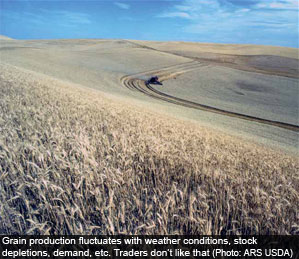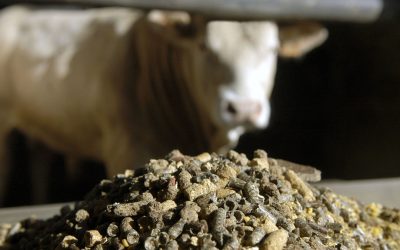Managing volatility in grain volumes by insurance

Grain supply and demand is influenced by many factors, such as the weather, stocks, pricing, etc. In general, the market doesn’t like this volatility and tries to find tools to dampen fluctuations. Hedging on the future markets is an often-used tool, but insurance could also be an option.
Major players in the agricultural supply chain have long-standing experience in managing risk, ranging from currency and price risk hedging to insuring against property and liability claims. Despite these efforts, earnings in some segments are still subject to substantial volatility, making it difficult to produce a steady return on equity, to create steady cash flows and to be able to invest in new ventures. In particular, low yields resulting from adverse weather conditions are seen by many industry participants as one of the main sources of volatility.
Australia is a leading grain producer with a 15% average share of global wheat exports. Four major bulk handling companies (BHCs) play an important role in transporting and storing grain across various states. Until 2008, when the wheat export market opened, the sole export rights used to lay with the Australian Wheat Board. The opening of export markets has led to increased competition and underlined the need for solid risk management. In general, the Australian BHCs, as well as many of their peers in other regions of the world, have a high fixed cost structure. Their revenues are highly correlated to the volume of grain throughputs, whether through their own storage sites or through facilities taken under take-or-pay agreements. Poor harvests in drought years mean that the planned throughput capacity is not always fully used. The result may be lower than expected profit and cash flows. Australia has recently experienced several droughts with large regional variability. The situation was particularly severe in Southern Australia in 2006/2007 where wheat production fell by 60% and in Western Australia in 2002/2003 when wheat production was halved. According to leading experts, droughts are likely to increase in severity and frequency in the future and could thus further accentuate production volatility in the continent.
Insure volatility
BHCs can insure against earnings volatility resulting from poor harvests through a production shortfall cover. Under such contracts, a BHC’s production is calculated as the weighted historical production per region and per crop type, with its market share taken into account. If production falls below a certain threshold, each tonne of shortfall is compensated by a pre-agreed value reflecting gross margin, fixed and/or variable costs. The settlement is based on industry production statistics (as typically obtained from government institutions) with the option to settle provisionally on outputs determined by yield forecast models when official statistics are only available later. The pay-out pattern of the insurance contract thus mirrors a put option on grain production. Production shortfall insurance is an effective way of reducing volatility in earnings and cash flows. By entering into such a contract, a BHC can improve its credit rating and thereby reduce its cost of capital. This increases shareholder value. The cover also reduces opportunity costs since the build up of funds necessary to invest in new operations is more predictable.
Canadian experience
As with many other grain producing countries, Canada is also experiencing material grain production variance. Swiss Re was instrumental in structuring the first production shortfall cover in the industry for United Grain Growers (UGG) – a major BHC in Canada that is now consolidated into Viterra. A major reason for UGG to engage in such cover was the increased emphasis on risk management by credit rating agencies, and the perception that equity analysts’ recommendations were sensitive to earnings results that deviated from forecasts. Additionally, the Toronto Stock Exchange instructed all listed corporations to identify and disclose principal risks and to implement appropriate risk management systems. By reducing the volatility of its financial results, production shortfall insurance was one of the key factors in the credit rating of the company as well as providing valuable capital at the right time.
Reprinted from February 2009 Trade Finance











